Maximizing Spawn and Fry Yields
If you want your discus to produce more spawn and fry, then this article is for you!
HOW SHOULD I CONTROL MY BREEDING TANK ENVIRONMENT?
Soften your tank’s water.
If your discus spawns are hatching at low rates, the first thing you should do is make your tank’s water softer. Hard water in your breeding aquarium will cause the shell of freshly laid discus eggs to harden too fast, and then the male discus won’t be able to fertilize the eggs. Lower the water’s hardness to about 100 to 200 microsiemens.
Keep the environment completely clean.
Or as close as you can make it perfectly clean! Keep the breeder aquarium very clean since bad bacteria and fungus could kill your discus spawn. Wipe down all its sides and surfaces when you change its water. Do at least two 25% water changes during the week. Keep the filters clean.
Also, use a diatom filter. Diatomaceous earth filters will filter the water up to 1 micron and also remove parasties that can harm fry. Immediately after you have cleaned the tank and changed its water, run the filter for a few hours.
Clean the spawning surfaces thoroughly at least twice per week. The cleaner your spawning surfaces are, the more likely larger quantities of spawn will hatch.
Add methylene blue to your tank after your discus have finished spawning. Methylene blue will protect the eggs from bacteria and fungus. Please note that this chemical can stain the silicon seals of glass aquariums.
Prevent water from flowing into the spawning area.
When discus pairs are spawning, reduce or stop water from flowing in the aquarium. The current could push the sperm away from the eggs, causing them to remain unfertile.
Additionally, move filters and airstones away from the spawning discus pair. Even turn off the filter when your discus are spawning. Spawning usually takes no more than 45 minutes, so be sure to turn the filter back on once your discus are done.
HOW CAN I PREVENT MY BREEDING PAIR FROM EATING THEIR FRY?
Cover the spawning surface with a wire mesh.
Place a stainless steel wire mesh around the spawn. Then the pair can still care for the eggs and wrigglers, but they won’t be able to eat them.
Wire Mesh Protecting Spawn
Remove the guilty parent(s).
Remove whichever parent is eating its fry. Often, only one member of the breeding pair eats the fry or wrigglers. So monitor your fish to find out which one is guilty and then remove it from the breeding tank. If the spawn is large, don’t leave the baby fry with the lone parent for a long time or it might get overwhelmed. To make the lone parent’s position easier, feed the fry baby brine shrimp two days after they are freely swimming.
If a certain discus pair always eats its spawn, remove their eggs and put them in a tank with a different discus pair that has spawn. Sometimes, this pair will care for the other discus’ spawn with their own children.
If both of the discus parents are eating their spawn and fry and you also don’t have any surrogate breeding pairs available, remove your breeding pair and artificially raise the spawn and fry yourself.
WHAT SHOULD I DO IF MY FRY START DYING WHEN THEY ARE PEA SIZE?
Treat the discus breeding tank for gill flukes. They are a common cause for fry to start dying when they are pea size.
WHAT SHOULD I DO IF MY BREEDING PAIR CONSISTENTLY PRODUCE INFERTILE SPAWN?
Exchange the male discus for a different one. Many male discus are not very fertile, possibly due to too much inbreeding or hormones given to them when they were young. If your discus pair has spawned multiple times, but very few of their eggs become fertile, replace the male discus with a different fish.
However, the exception is for young discus. In that case, give them more time. A young male discus might need to spawn many times before fertilizing correctly.
Blue Panda with Lines Discus with Spawn
QUESTIONS
- What is the ideal tank environment for spawning?
- What would you do if a discus parent starts eating its spawn?
- What are the most helpful tips in this article for increasing spawn and fry production?

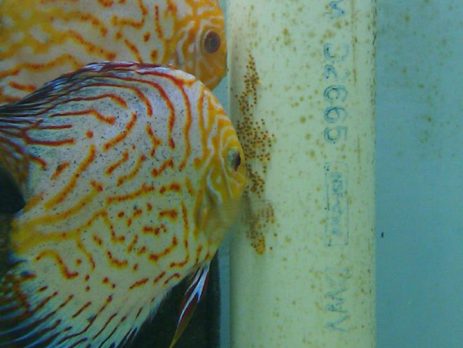
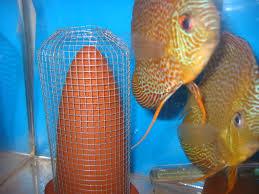
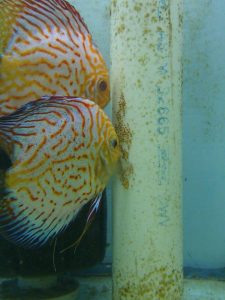



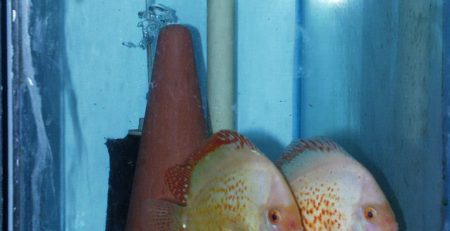
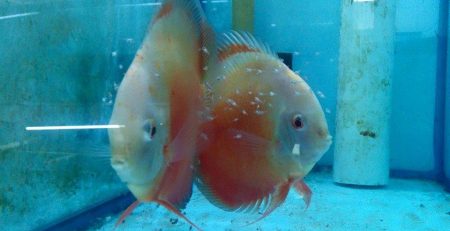
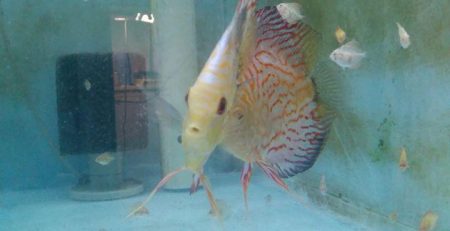
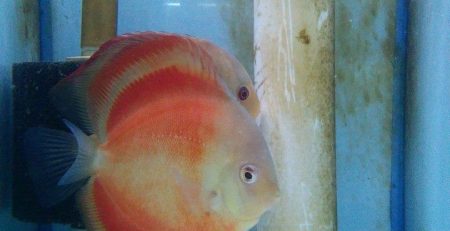
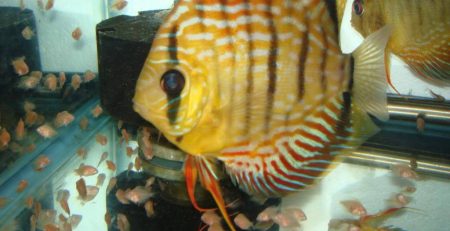
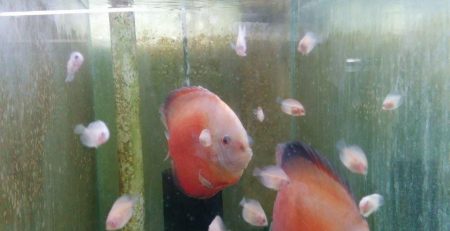
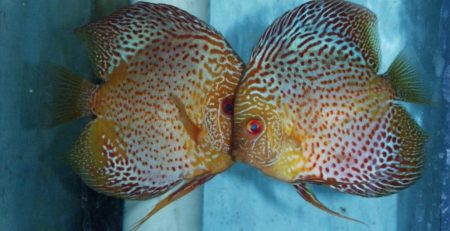
Leave a Reply
You must be logged in to post a comment.